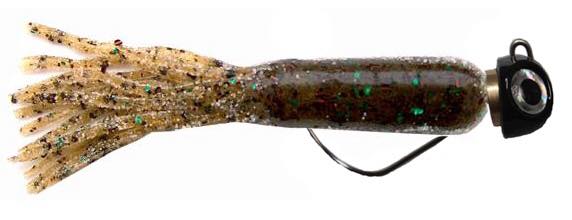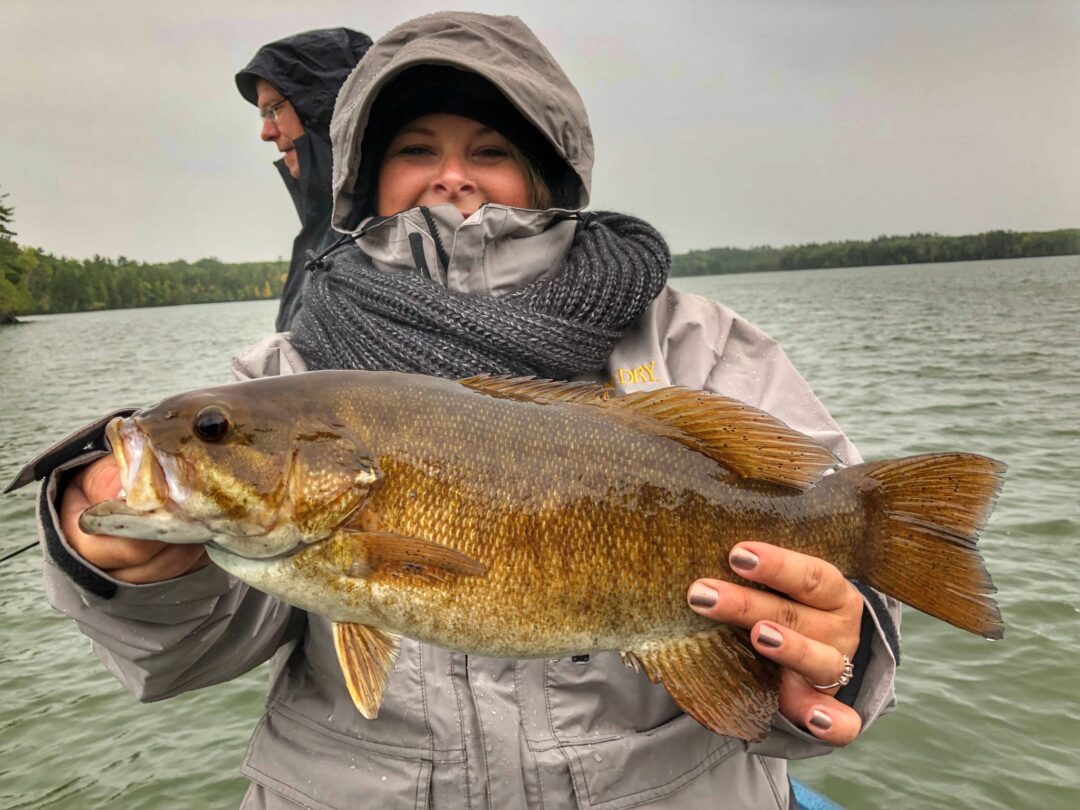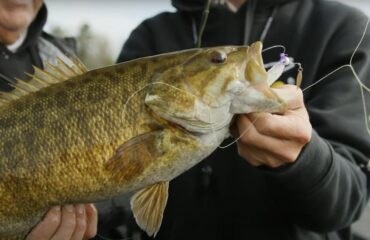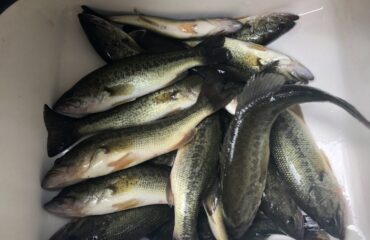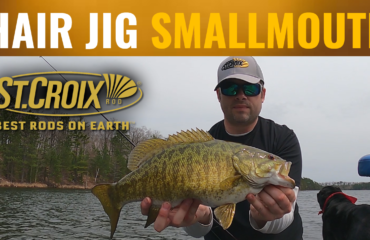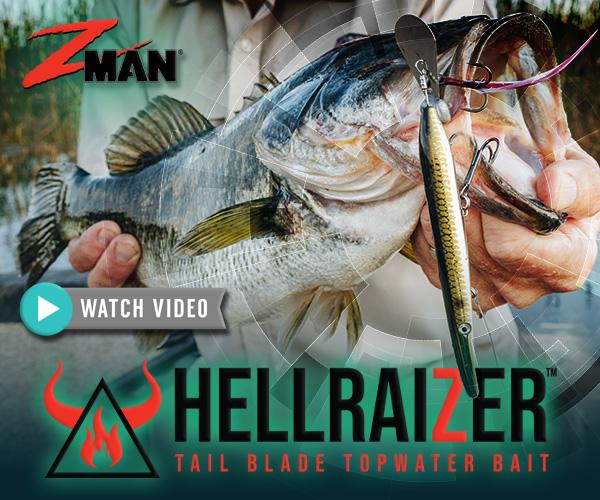Swing For The Fences
Regardless of the type of angler you are, our skills and statuses in fishing are always evolving and improving. A few years ago for example, one might have considered me an avid smallmouth angler who merely fishes a ton and writes articles. Now, that role has evolved into being actual licensed fishing guide who does it 6 months per year. This didn’t happen automatic, or overnight. I evolved into a role that became one of my life’s most rewarding accomplishments.
The world and its human race is always evolving. Therefore in fishing, our strategies, tackle, and techniques always evolve into new ideas, products and methods. In the realm of jig fishing, every bass jig being manufactured today evolved from products, designs, and ideas of generations past. The creation of a specific jig type didn’t happen overnight either. It evolved!
A jig’s existence serves a specific fishing purpose. Its solutions to catching bass are executed by weight, head shape, rigging style, action, vibration, and color. A few seasons ago I was able to incorporate my savvy knowledge of tube jigging and collaborate it with a new form of rigging with a swinging head jig. Tubes haven’t evolved much since their advent, and remain the most popular and utilized bait in the history of smallmouth fishing. Combined with a new generation of jig, my tube jig fishing methodology and presentation has evolved into something new and better that most anglers aren’t employing.
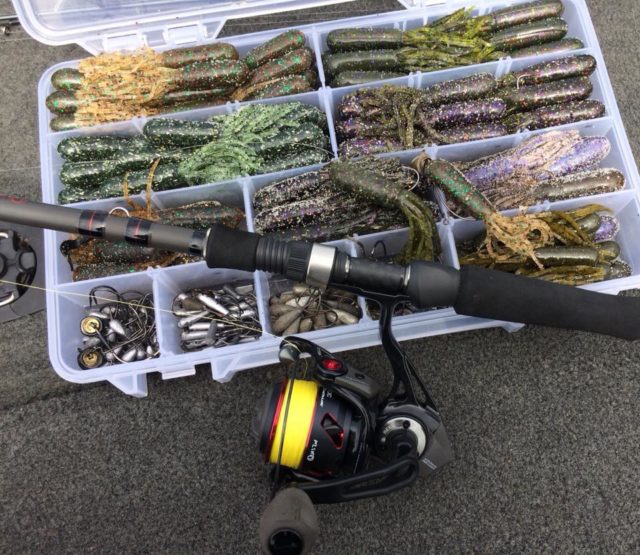
Freedom of Choice
Every day on the water brings different conditions with it. Anglers are left with important rigging decisions to make, such as how to best match the presentation accordingly to the environments being fished and feeding moods of bass. Few jigs encompass different rigging types like a swinging head design does. Properties of wacky rig, shakey head, Texas rig, and football jig are all incorporated into it. What other jig by itself can perform each of these tasks? But what if you want to evolve the jig into something better?
In the last decade, swinging head jigs and their effectiveness has spawned a new breed of jig head designs, techniques, and products developed and popularized by most major tackle manufacturers.
Since 2012, Freedom Tackle has been able to modernize and revolutionize swinging head jig fishing further, taking its angling concepts to new heights with the introduction of a universal interchangeable hook design. This articulated system is the ability of affixing any type and brand of hook to the swinging jig head. Since its introduction, Freedom Tackle Corp. has developed its entire line of products to revolve around the swinging head concept ranging from ball heads, football and swimbait jigs, and even spinnerbaits, swim jigs, and buzzbaits.
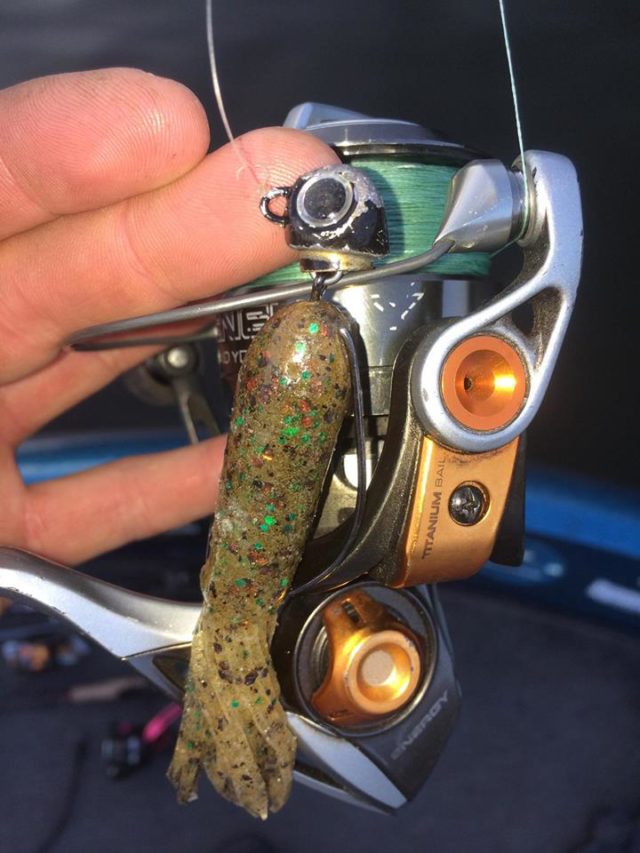 No other specific bait or rigging combination in my boat accounts for more numbers of smallmouth bass in than the Strike King coffee tube paired with the Freedom Tackle Zodiac. All the fishing we do with this setup takes place in depths between 10 to 30ft water. It gets down deep quickly, it’s swinging head promotes better bait action and movement, it is very snag resistant, and it gets eaten repeatedly year after year.
No other specific bait or rigging combination in my boat accounts for more numbers of smallmouth bass in than the Strike King coffee tube paired with the Freedom Tackle Zodiac. All the fishing we do with this setup takes place in depths between 10 to 30ft water. It gets down deep quickly, it’s swinging head promotes better bait action and movement, it is very snag resistant, and it gets eaten repeatedly year after year.
Last guiding season, the tube and swinging jig head combination was the most reliable, effective, and biggest fish producer in my boat for leisure fishing, and guide trips. I hosted several guide trips in which fish wouldn’t care to grab anything else but a slowly-dragged swinging head tube along the bottom.
The swinging head with interchangeable hook system is a revolutionary tool for power jigging and probing through the rocky terrain and complex lake contour inhabited by smallmouth. Utilizing an upright weight-forward head design, the jig always lands in an upright position, evading snags and inviting feeding fish. The progressive thinking behind Freedom Tackle’s design is beautiful in its simplicity with lifelike 3D eyes, a sonic brass echo chamber, interchangeable hook features, and free range of motion.
While the chemically sharpened hooks available in original packaging with the jig are rightfully sharp, I modify the jig to my specifications, making it sharper and stronger to better withstand rocks and snags, by swapping out factory hooks in favor of my preferred Trokar 2/0 EWG’s. I then take further steps, matching hook type and size according to the soft plastics smallmouth want. When hooked, smallmouth are not able to use this tube jig as leverage when trying to shake free, thus more fish are landed.
Tube jigs work in all types of smallmouth water, but certain tubes work better than others. The only colors I use are Magic Goby / Crazy Craw / KVD Kick. This entire package excels with fishing deep water, with its rapid sink rate. It’s an unbeatable tube jig combination from mid summer through the late fall cold water wintering period.
1/4 oz. swinging head gets fished with spinning gear. Meanwhile heavier 3/8 oz. gets fished with casting gear.
The telegraphic sensation of a biting smallmouth that just clamped its powerful jaws down onto my bait is unexplainable. There isn’t a better presentation than using plastics and single hooks on a swinging head jig. Whether fishing the interchangeable swinging head jig with an extra wide-gap, or standard worm hook, feeling the pull is special. Jigging has never been made to be so creative like this.
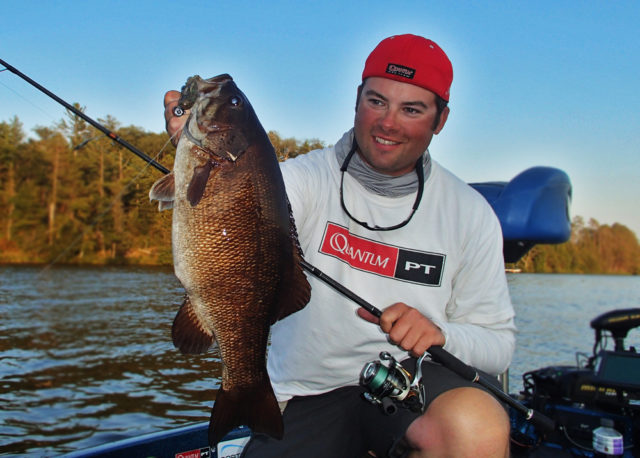
When smallmouth aren’t chasing moving baits, or won’t clobber another type of jig, the trusty tube with a swinging head often saves the day. Despite the tube being one of the most popular smallmouth baits of all time, smallmouth are mostly unconditioned to improved action, seductiveness and effectiveness of tubes being presented with swinging head jigs.
As the evolution of jig design and jig fishing continues, manufacturers and anglers will keep discovering new ways of delivering time-tested and classic strategies paired with new age tackle. Want to deliver a tube to big smallmouth better than ever before? Just swing for the fences.
